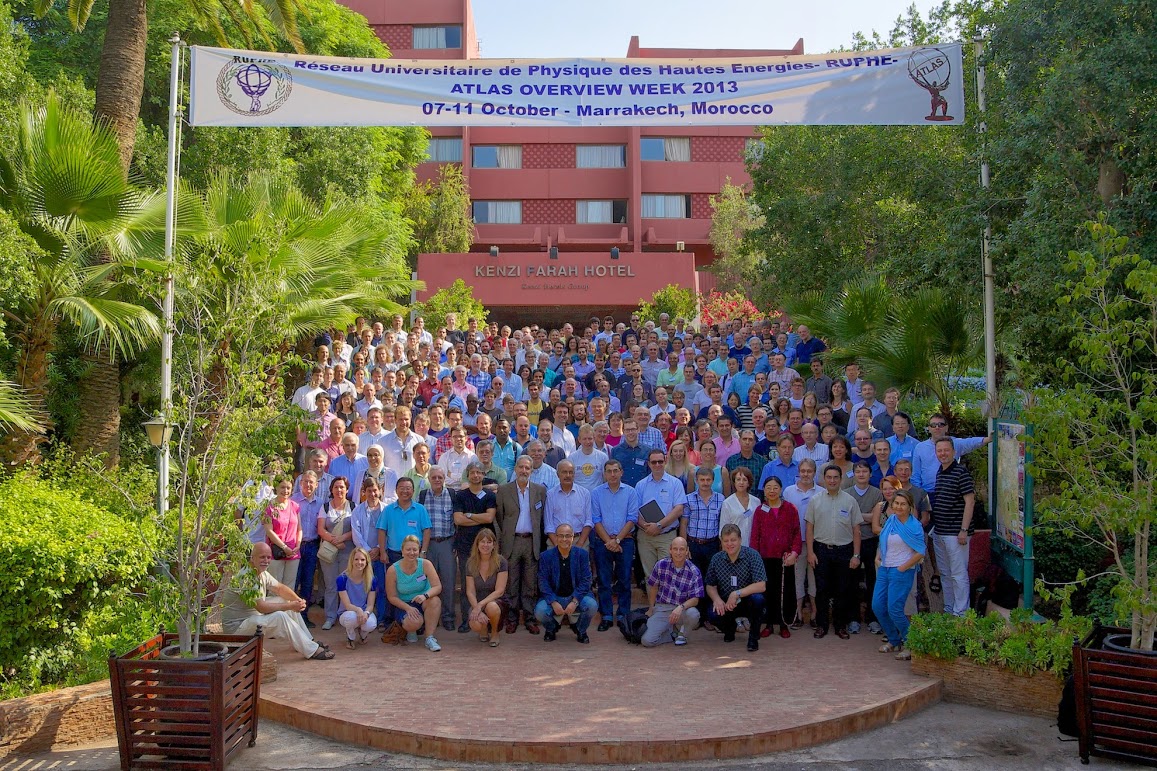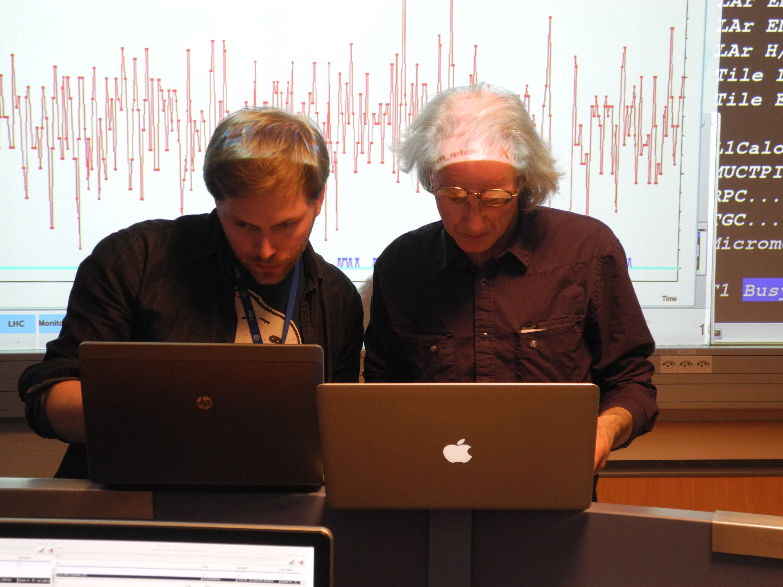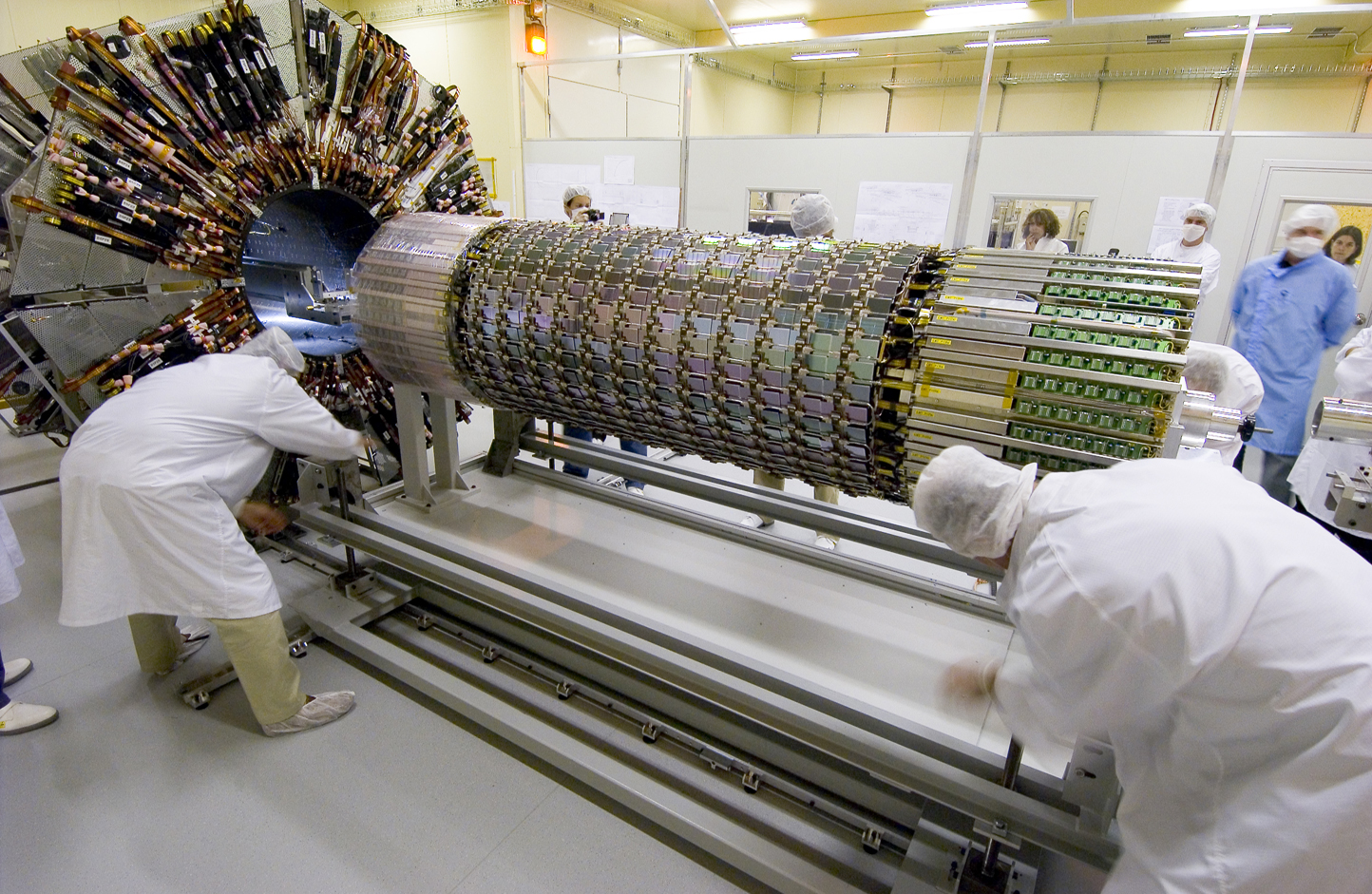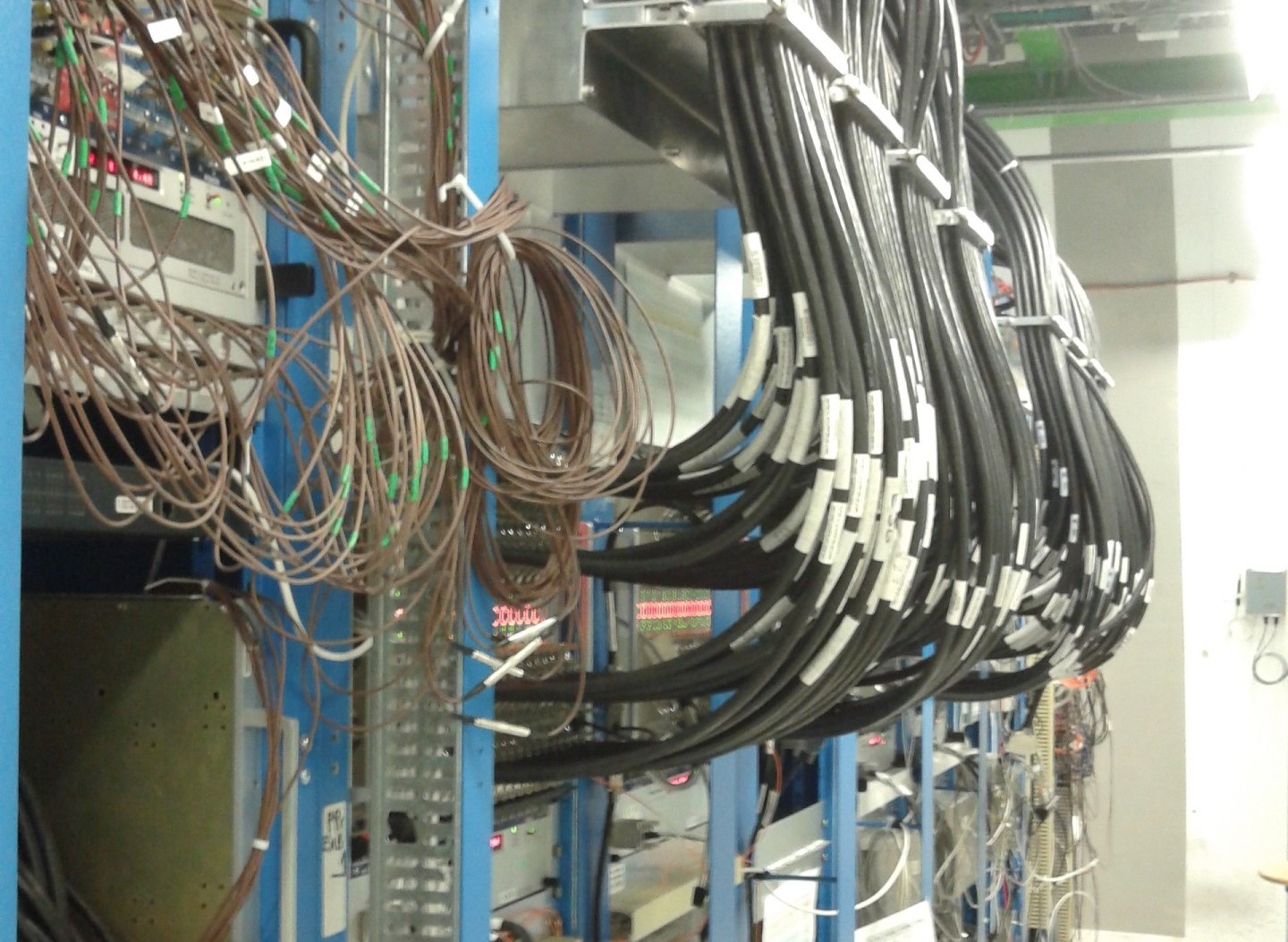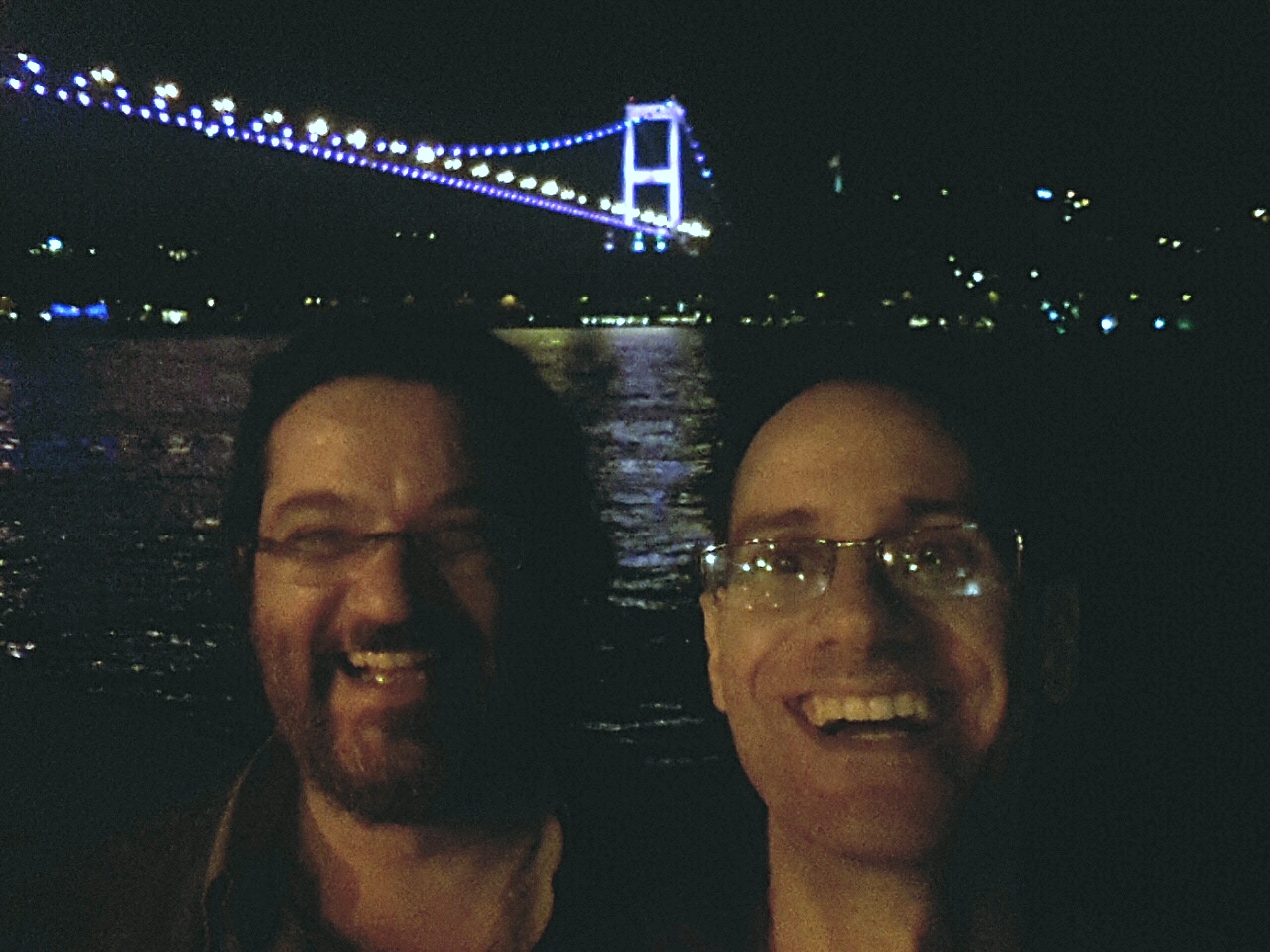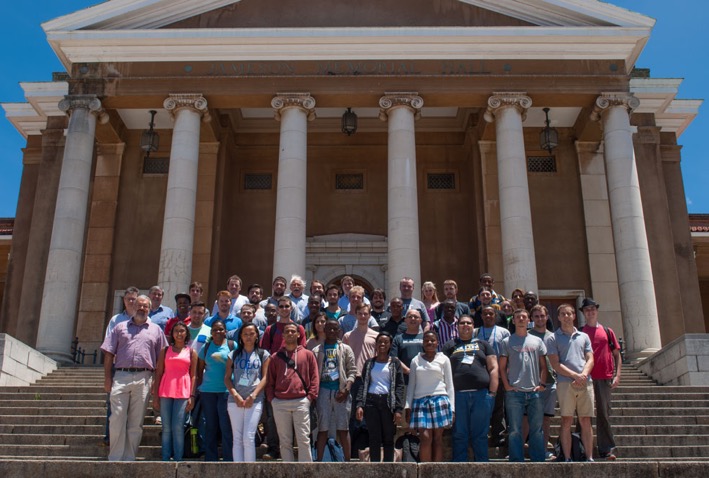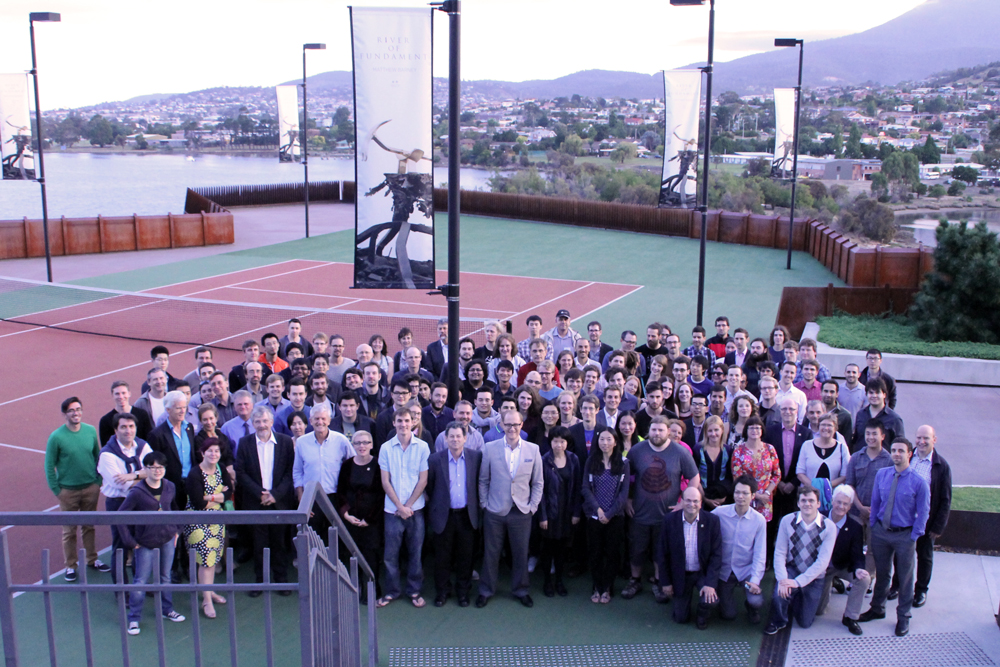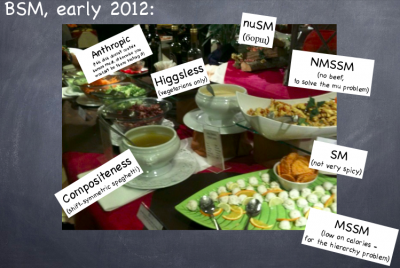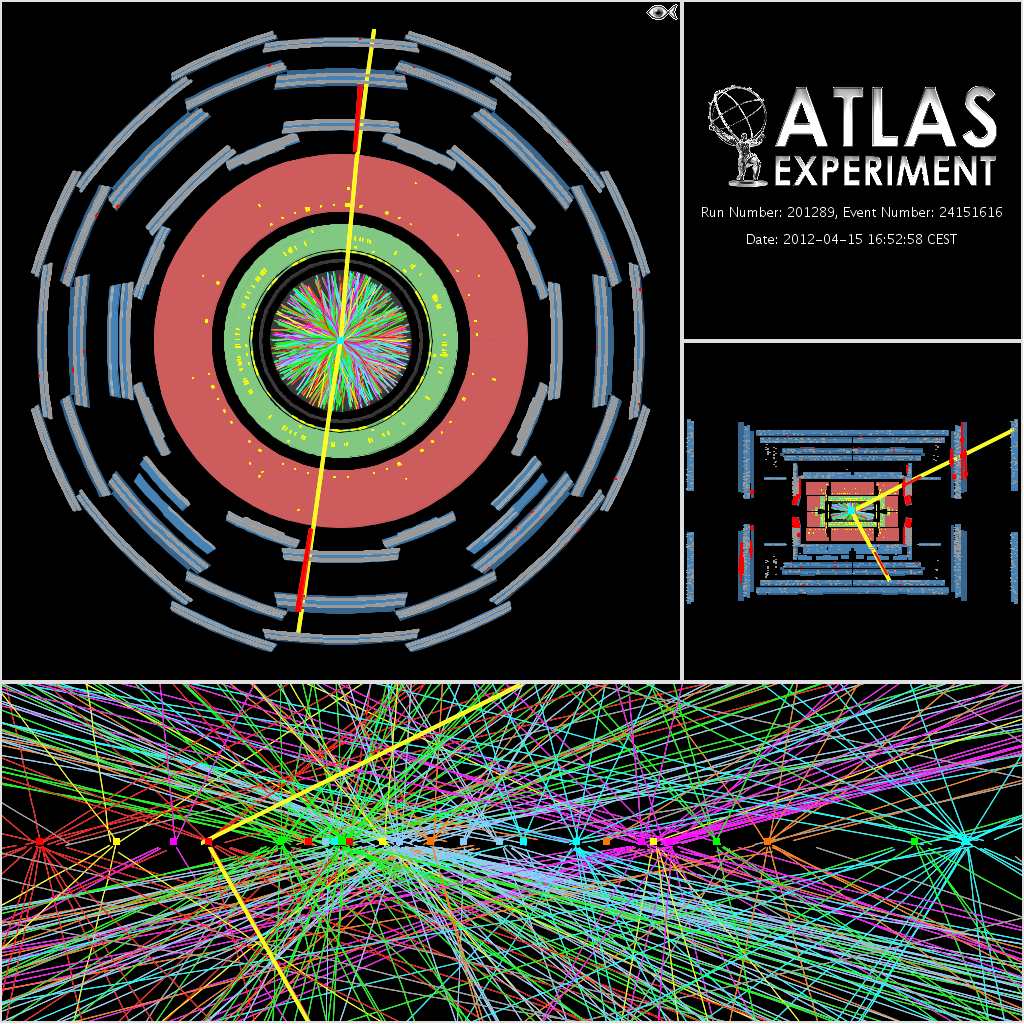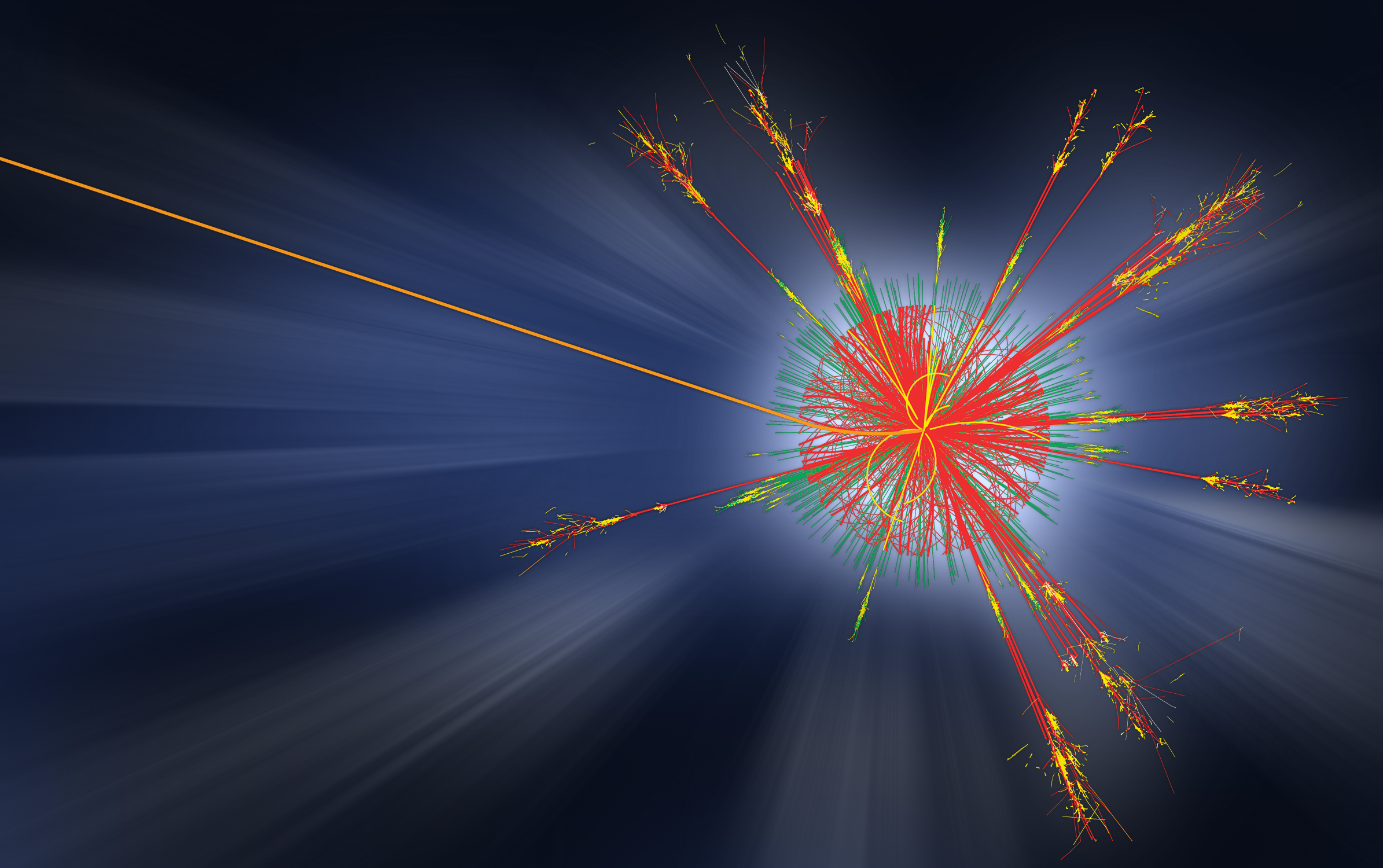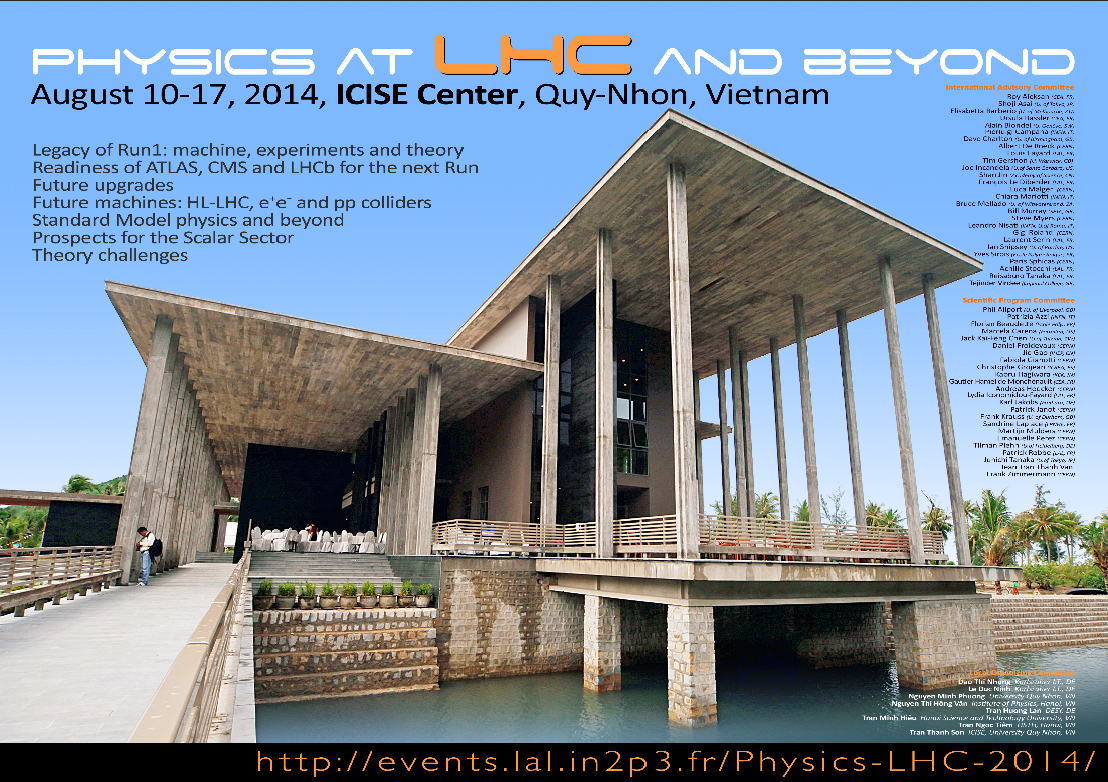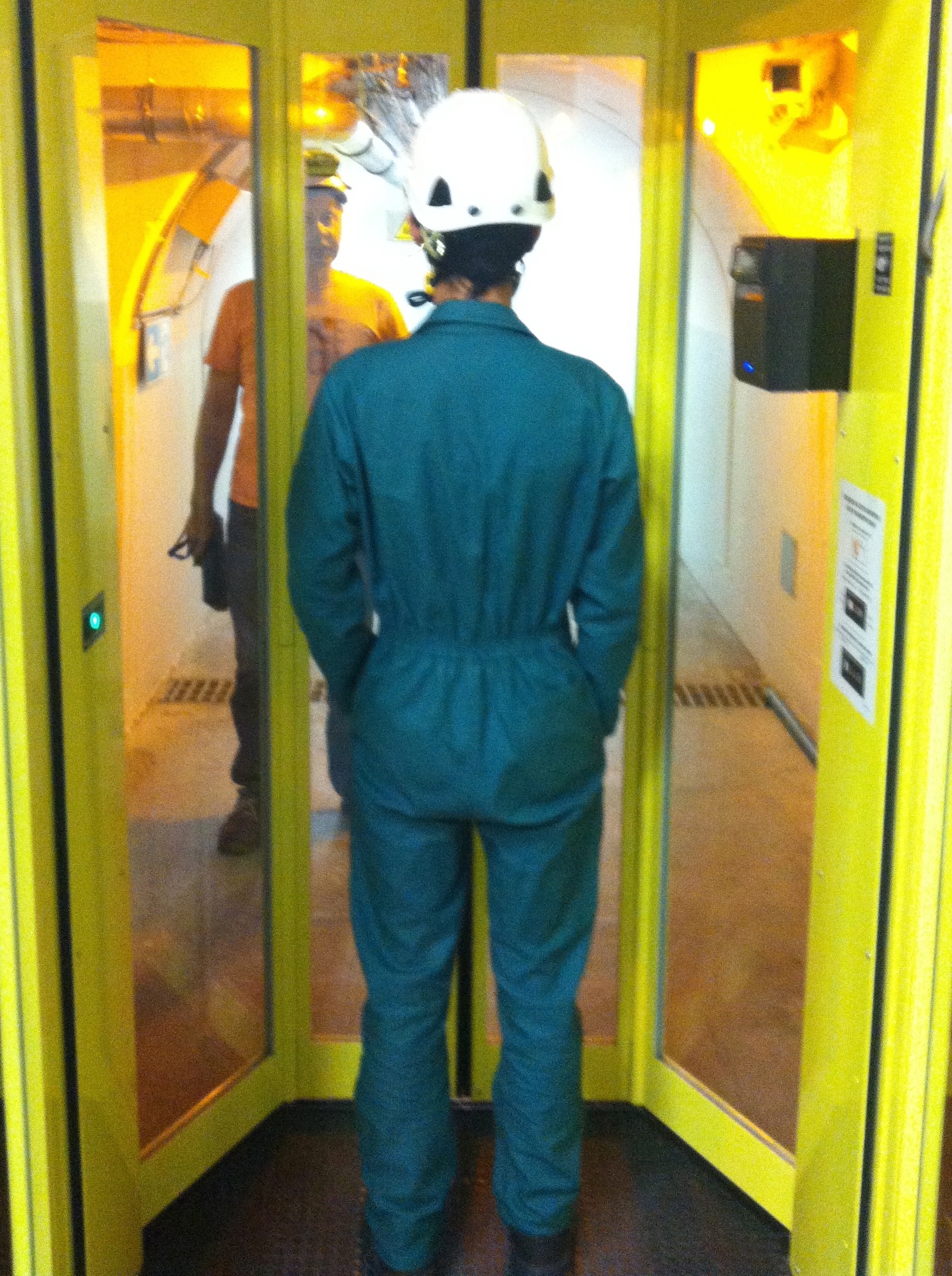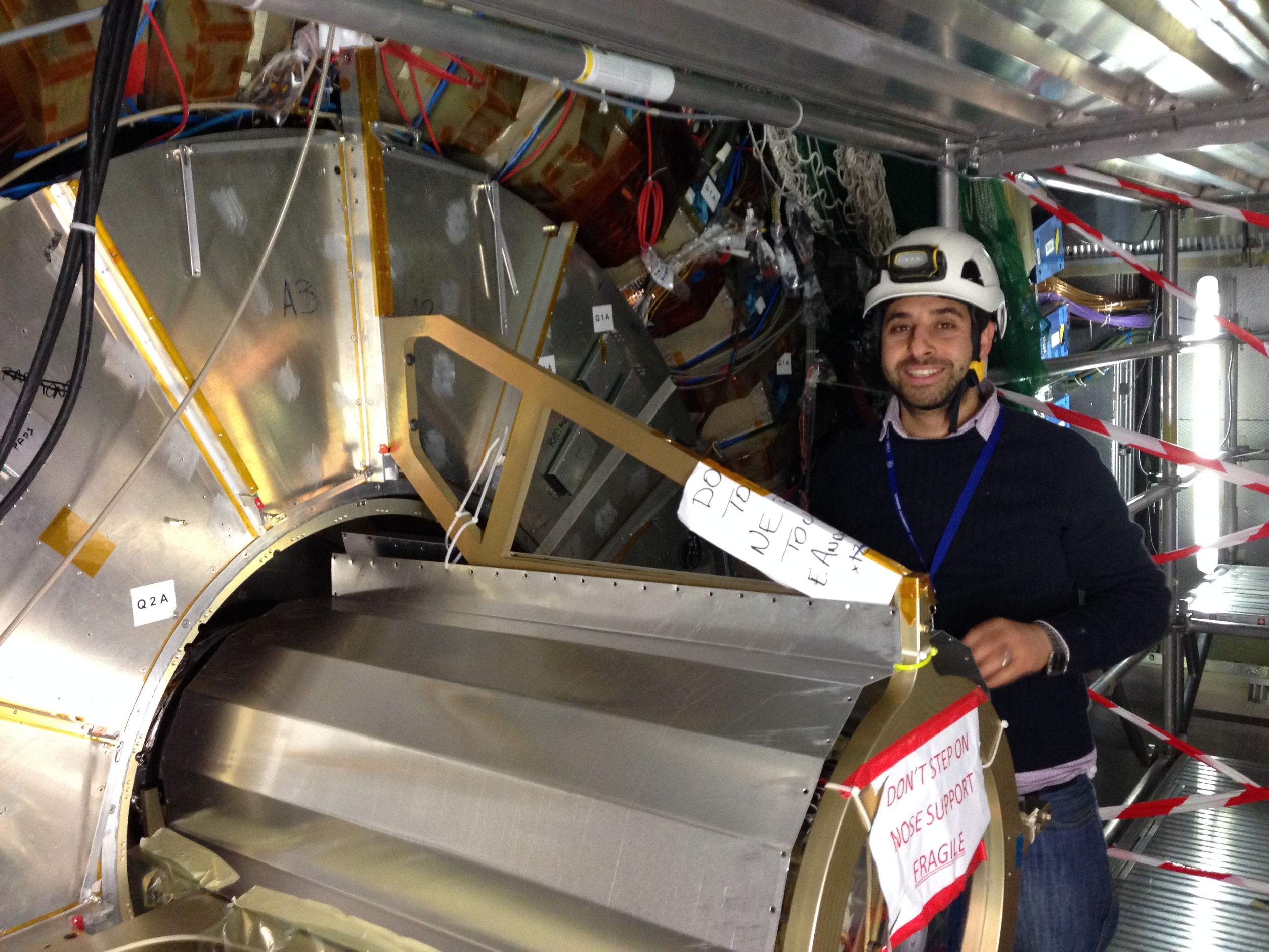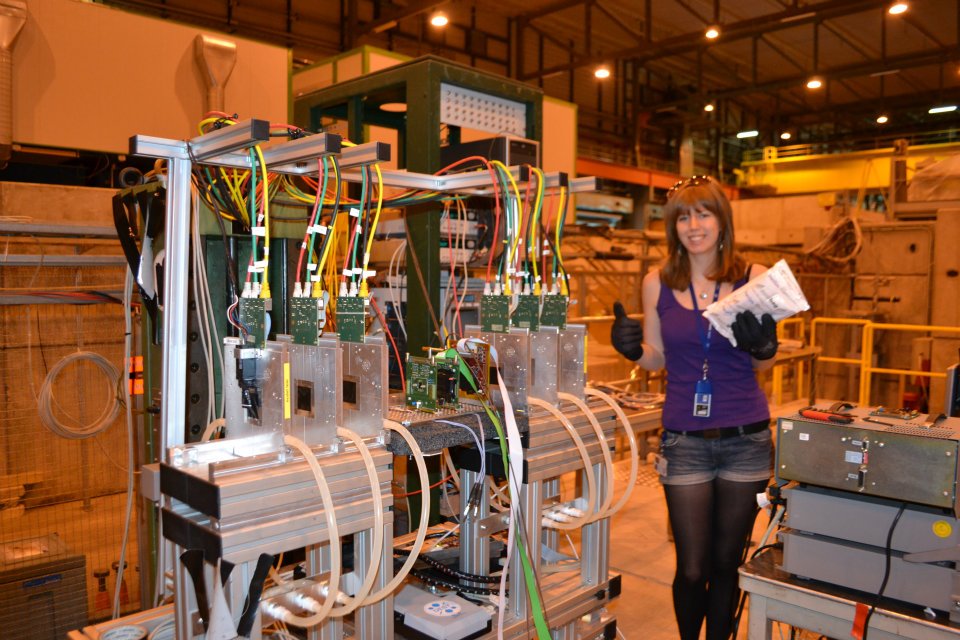Blog
Boost and never look back
When I arrived in Chicago this last Sunday for the BOOST conference I had a pretty good idea what new results we were going to show from ATLAS. I also had some rough ideas of what our friends from the other experiments and theory groups would be up to. What I didn’t expect was to see an ad that would fit the conference so nicely!
Blog |
A summer evening in the ATLAS control room
The sun has already set over Geneva when I finally walk out from the ATLAS control room. We have been waiting for beams to be injected into the machine since the early hours of the afternoon, but without much success so far. Just a regular day for the most ambitious particle accelerator mankind has ever built, but a pretty boring afternoon for our entire shift crew.
Blog |
From ATLAS Around the World: Brief history of Morocco in ATLAS
In 1996, Morocco officially became a member of the ATLAS collaboration. The eagerly awaited day had finally arrived, and the first Arabic and African country signed a collaborative agreement with CERN to participate in the great scientific adventure of particle physics.
Blog |
From ATLAS Around the World: Triggers (and dark) matter
To the best of our knowledge, it took the Universe about 13.798 billion years to allow funny looking condensates of mostly oxygen, carbon and hydrogen to ponder on their own existence. Some particularly curious specimens became scientists, founded CERN, dug several rings into the ground near Geneva, Switzerland, built the Large Hadron Collider, and also installed a handful of large detectors along the way.
Blog |
From ATLAS Around the World: Working with silicon in Japan
I joined the ATLAS experiment in 2012 after graduating from the University of Tokyo, however my previous experience was completely different from collider physics. During my Master’s course, I focused on the behaviour of a kind of silicon detector operated in Geiger mode. At that time, the experiments at CERN looked like a “castle” to me.
Blog |
From ATLAS Around the World: Faster and faster!
Faster and Faster! This is how it gets as soon as LS1 ends and the first collisions of LHC Run 2 approaches. As you might have noticed, at particle physics experiments we LOVE acronyms! LS1 stands for the first Long Shutdown of the Large Hadron Collider.
Blog |
From ATLAS Around the World: The oldest observer state of CERN is no longer just observing!
If you have ever been to a bazaar in Turkey, you would know that you have to bargain hard and you have to carefully examine what you buy. Sometimes this attitude goes way too far. In our case about half a century… Turkey had been an observer state of CERN since 1961 but as of 6 May 2015.
Blog |
From ATLAS Around the World: First blog from Hong Kong
Guess who ATLAS’ youngest member is? It’s Hong Kong! We will be celebrating our first birthday in June, 2015. The Hong Kong ATLAS team comprises members from The Chinese University of Hong Kong (CUHK), The University of Hong Kong (HKU) and The Hong Kong University of Science and Technology (HKUST), under the the Joint Consortium for Fundamental Physics.
Blog |
From ATLAS Around the World: African horizons
It’s great being back at CERN and being able to immerse myself in the tangible atmosphere of excited anticipation for the first collisions at 13 TeV this June. I am a South African, usually based in Durban — a city currently afflicted with xenophobically motivated riots and rolling blackouts. Being at CERN is really a different world right now, to a greater extent than usual.
Blog |
From ATLAS Around the World: A view from Down Under
While ATLAS members at CERN were preparing for Run 2 during ATLAS week, and eagerly awaiting the beam to re-circulate the LHC, colleagues “down under” in Australia were having a meeting of their own. The ARC Centre of Excellence for Particle Physics at the Terascale (CoEPP) is the hub of all things ATLAS in Australia.
Blog |
From ATLAS Around the World: Preparing for Run 2 from Colombia
After a two-year stay at CERN, I moved back to Colombia in 2012. Being involved in ATLAS and working from Colombia has been a great experience for me; I get to continue contributing to the physics searches and also do other things like teaching, giving seminars, and doing outreach activities.
Blog |
A week of firsts
The annual conference, Moriond, is in its 50th edition this year, and I’ve had the pleasure of coming down to Aosta in Italy to participate in the QCD session; for the first time. It’s actually a week of firsts for me. The conference organizers described it as being in a kind of “QCD confinement”.
Blog |
Moriond Electroweak: physics, skiing and Italian food
If you’re a young physicist working in high energy physics, you realize very soon in your career that “going for Moriond” and “going to Moriond” are two different things, and that neither of the two means that you’re actually going to Moriond. This year’s “Moriond Electroweak” was held in the Italian mountain resort of La Thuile, and had a special significance.
Blog |
The Ties That Bind
A few weeks ago, I found myself in one of the most beautiful places on earth: wedged between a metallic cable tray and a row of dusty cooling pipes at the bottom of Sector 13 of the ATLAS Detector at CERN. My wrists were scratched from hard plastic cable ties, I had an industrial vacuum strapped to my back, and my only light came from a battery powered LED fastened to the front of my helmet. It was beautiful.
Blog |
The Art of Rediscovery
When I tell people I’m a particle physicist, one of the most frequent questions I get asked is: “So, have you discovered anything?” Funnily, I’ve spent much of the past two years trying to rediscover something that’s already been seen before. In today’s world, which fetishizes the New, this may seem slightly lame, but just because we’ve discovered something, doesn’t mean we’ve fully understood it.
Blog |
Defending Your Life (Part 3)
This is the last part of my attempt to explain our simulation software. You can read Part 1, about event generators, and Part 2, about detector simulation, if you want to catch up. Just as a reminder, we’re trying to help our theorist friend by searching for his proposed “meons” in our data.
Blog |
Defending Your Life (Part 2)
I’ve been working on our simulation software for a long time, and I’m often asked “what on earth is that?” This is my attempt to help you love simulation as much as I do.
Blog |
Doing Physics in Vietnam
One of the perks of working in our field is the opportunities we get to go to exotic places for conferences. I always felt the HEP-MAD conference in Madagascar would top this list, but the one some of us went to in Vietnam can't be too far behind. The Rencontres du Vietnam conference series has been organised in the coastal town of Quy Nhon since 2011, covering different physics topics. This year, one of them was titled Physics at the LHC and Beyond, where I had the privilege of presenting ATLAS soft QCD results.
Blog |
Defending Your Life (Part 1)
Having spent many hours working on the simulation software in ATLAS, I thought this would be a good place to explain what on earth that is (H/T to Al Brooks for the title). Our experiment wouldn’t run without the simulation, and yet there are few people who really understand it.
Blog |
Identity problems
An obligatory eye scan is required for all ATLAS underground personnel entering the experimental cavern. The iris recognition is performed by the IrisID iCAM7000. Its only point in life is to keep track of who enters and leaves the Zone. It sounds like a simple task for such an advanced technology, but -- like most things in the world of research -- it's never without some hiccups.
Blog |
Taking stock at the LHCP conference
I felt like I was returning home as I walked through the gates of Columbia University at 116th Street and Broadway, the day before the LHCP conference began. The scaffolding from the recently completed graduation ceremonies reminded me of my own PhD graduation thirteen years ago. The ubiquitous Columbia-blue signs of "Welcome back Alumni" seemed to be talking just to me.
Blog |
LHCPlanning for the future
As someone who comes from a small mountain town, for many years I've linked the word 'summer' to 'seaside' and 'sun'. During my experience as a physicist working in ATLAS, I found myself associating the word 'conferences' to the word 'summer' more often than to the two above.
Blog |
Notes from Underground: IBL vs Brazil Championship
Previously in Notes from Underground, Dave Robinson wrote in some detail about the work going on inside the ATLAS Detector, and Clara Nellist wrote about the inner detector of ATLAS, discussing the different types of detection units or Sensors (Planars & 3D). I will continue to delve into the exciting world of the inner detector with its brand new Insertable B-Layer (IBL) and its related parts.
Blog |
Notes from underground: Pixel prototypes
In last week’s post for this Notes from Underground series, David talked about the work that goes on in the ATLAS pit. I'm going to take a step back and talk about what happens before a detector is installed. Although the work I want to tell you about didn't technically take place underground, much of it was performed in what is essentially a large airport hangar without natural light, so it certainly feels like you’re 100m down!
Blog |
Notes from Underground: Servicing Silicon
We physicists refer to the vast underground cavern that houses the ATLAS experiment as ‘the pit’. That may be a strange term to use for a marvel of civil, mechanical and electrical engineering, but nonetheless there are parallels to what you might imagine a ‘pit’ to be. Working inside the ATLAS detector in the pit can be dark, sometimes hot and not suited to those with claustrophobia. It often involves climbing several sets of makeshift steps and gantries and crawling flat on your stomach through narrow gaps to get to the part of the detector where you need to be. You will be wearing a safety helmet with mounted lamp, steel toe-cap shoes, one or more dosimeters to monitor radiation exposure and even a harness, if working at heights. Not to mention tools, laptop and any equipment you need to do your job. You tend to recognize the experimental physicists, engineers and technicians who have just come up from the pit – they stand blinking in the sunlight with a tired and rather sweaty appearance.
Blog |



